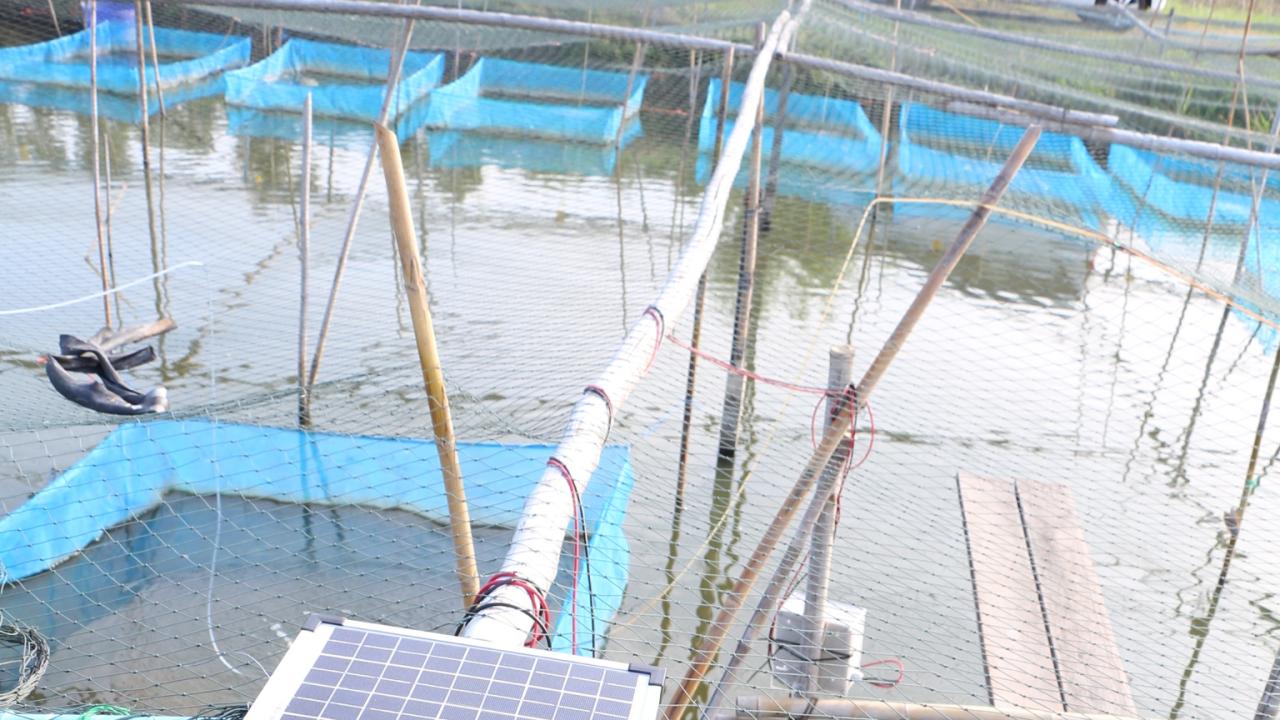
What comes to your mind when you hear 'smart technology'? Mobile phones, watches, or television sets, perhaps? How about a smart fish farm or a smart water tank? Far from being scenarios in a science fiction story, these smart set-ups are real-life installations in Thailand and Malawi, respectively. All this is possible because of the Internet of Things.
What is the Internet of Things, or IoT? "It refers to a network of small devices that are connected and can 'talk' to each other and the Internet," says Marco Zennaro, research officer at ICTP's Telecommunications/ICT for Development Laboratory (T/ICT4D). "These devices measure some physical parameters and send that information to each other and to the Internet. As you can imagine, this can have many applications, from industrial applications to home automation but also scientific and development applications," he explains
To gain a deeper insight on the scientific applications of IoT that have the potential to change the world, ICTP is organizing a workshop from 16 to 27 March, which is co-sponsored by the International Telecommunications Union (ITU), the Network Startup Resource Center (NSRC) based at the University of Oregon, and NetworkTheWorld. "This workshop is the first of its kind to be held at ICTP and we will cover scientific and development-oriented applications of IoT, from air quality monitoring to water supply chain management," says Zennaro. ICTP has already been funding IoT-based projects in Benin to help with air-quality monitoring, in Malawi to optimize water supply and in Thailand to improve agriculture and fish farming standards. "When we think of IoT, we think of modern cities with smart technology for automated street lighting, traffic control or modern home equipment. In fact, IoT can have much more applications to meet needs of developing countries," says Zennaro.
An ICTP-supported project being carried out by the Asian Institute of Technology (AIT) in Thailand is one such example. "At AIT, we would like to realize the concept of a 'living laboratory' to demonstrate the capabilities of wireless sensor networks (WSN) and the IoT," says Apinun Tunpan, a senior researcher there. Tunpan says he and his colleagues are looking at three focus areas: 'smart living', where they would like to use WSN and IoT in residential and office buildings to report on environmental conditions; 'smart animal farm', which involves monitoring and controling animal and fish farming environments for better productivity; and 'smart agriculture', which uses IoT for monitoring and controlling conditions that will increase crop yields.
"This is really a big field with many applications," says Zennaro. "So, you have different kind of sensors, electronics and devices that come in different sizes from different vendors. But, there is no standard for the IoT," he adds. "This is a challenge. For the IoT to be as successful as the Internet, we need to establish standards, and this is a point Vint Cerf, [considered one of the fathers of the Internet and currently Google's Chief Internet Evangelist] emphasizes." A video message that Cerf has sent to ICTP will be broadcast during the workshop. "Cerf invented the TCP/IP [a set of communications protocols], which allowed all computers to talk the same language," explains Zennaro. "One of the points Cerf makes in his video message is the need to establish such standards for IoT, and this is something we will try to address during the workshop," he says. "We have one speaker from the ITU, one from the Institute of Electrical and Electronics Engineers, and one from CISCO (a big player in the devices market), all here to talk about standards."
Another aspect that the workshop participants will learn about is managing Big Data. Zennaro says that Big Data and IoT go hand in hand. "We see this [Big Data collections] happening in all our workshops: even if you set up a small network, maybe just five nodes, and after three days you have thousands of readings, and you have to make sense of those readings and manage them. So, Big Data is an important part of IoT, and two days of the workshop will be devoted to this."
The workshop will kick off its activities with sessions on how to set up and programme nodes and networks for IoT. "We will be covering practical and technical aspects from setting up IoT nodes to IoT architecture and security," says Zennaro. "Then, we will look into standards, Big Data and case studies," he says. To get a hands-on idea of how IoT can work in the field, the participants will deploy sensors at the Miramare Park. "The idea is that from anywhere in the world, through the Internet, you can talk to a sensor in the Miramare Park," Zennaro explains.
The applications for IoT are far-reaching and diverse, ranging from volcano monitoring to controlling water supply. Through this workshop Zennaro and his colleagues hope to place IoT firmly in the map of development through science and technology.
















